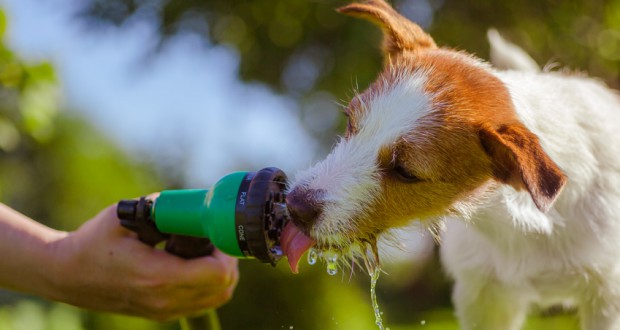SEAACA (Southeast Area Animal Control Authority; www.seaaca.org) is helping pet owners and animal lovers with useful tips on how to survive the summer’s high temperatures. In the summer heat, many cats, dogs, and other pets can suffer from a wide variety of ailments, including dehydration, exhaustion, heat stroke, and more. With a few preventive measures and safety precautions, however, pet owners can protect their beloved animals and help them enjoy these fun months.
Here are some important tips:
1. Drink Up. Ensure your pets always have cool, clean water that is easily accessible. Drinking water is the best way for pets to avoid dehydration. Plus, remember that water warms up fast, so replace water dishes frequently to keep them cool and clean.
2. Keep It Cool. Make sure your air conditioning is on, or that your windows and doors are open. Cross-ventilate to keep air moving through your home. You can also cover windows by using shades, blinds, and curtains to block the hot sunlight during the day.
3. Not In the Car. Never, under any circumstances, leave your pet in a car. Within just a few minutes of being trapped in a hot car, your pet’s temperature can rise to dangerous and lethal levels. And remember, rolling down the windows or parking in the shade while your animal is in a car is not acceptable.
4. Take It Easy. Too much exercise, particularly in the middle of the day, can exhaust your pet during the hot summer months (especially for older pets, short-nosed dogs, and pets with thick coats). Try to take walks and exercise with your pet in the morning or evening, when the temperature is cooler. Also, avoid walking on hot concrete or asphalt and instead use soft grass areas if possible.
5. Don’t Get Buggy. Fleas and ticks can be extra problematic during the summer. Make sure to use flea and tick treatments recommended by your veterinarian, as over-the-counter products can be toxic to some animals.
6. Apply the Lotion. Some pets can get sunburned, especially if they have light-skinned and exposed flesh on their noses, ears, and other body parts. Talk to your veterinarian and apply appropriate sunscreen to your pet’s vulnerable areas.
7. Watch It. Pets can’t tell you they’re stressed by the heat, but you can notice multiple telltale signs. These include heavy panting, constant thirst, dizziness, lethargy, unusual clumsiness, fast heartbeats, glazed or unresponsive eyes, vomiting, excessive salivation, and deep red or purple tongue color. If your pet exhibits any of these characteristics or behaviors, contact your veterinarian or animal hospital immediately.
8. Take Action. If your pet is succumbing to the heat, here are actions you can take before seeking professional medical assistance: move your pet into a shaded or cooler area; place your pet in cool (not ice cold) water; apply cold towels or ice packs to your pet’s head, neck and chest; help your pet suck on ice cubes or drink water.
“The summer is a time to play and have fun, but it also unfortunately can be a dangerous period for our favorite pets,” noted SEAACA Executive Director, Dan Morrison. “We are here to spread the word and give pet owners tips on how to help animals survive the heat. A few precautions can save a pet’s life,” he added.
For more information about SEAACA, please visit www.seaaca.org.
 Dog Living A lifestyle magazine for dog lovers
Dog Living A lifestyle magazine for dog lovers





